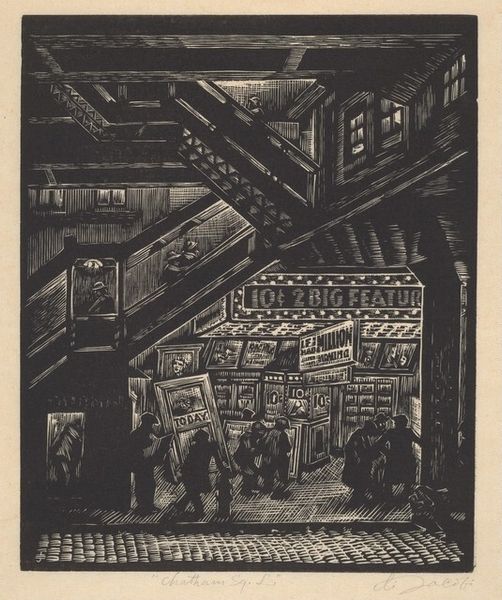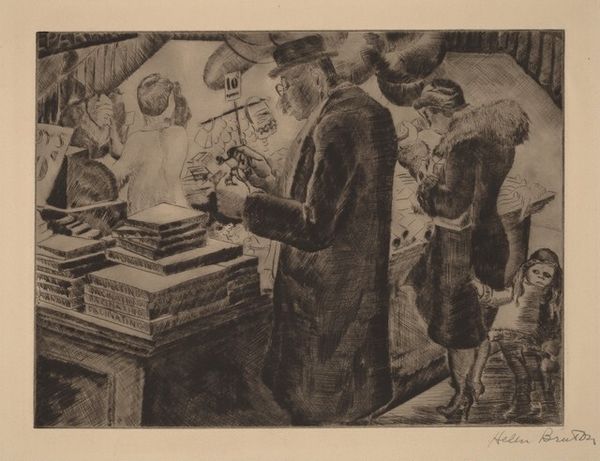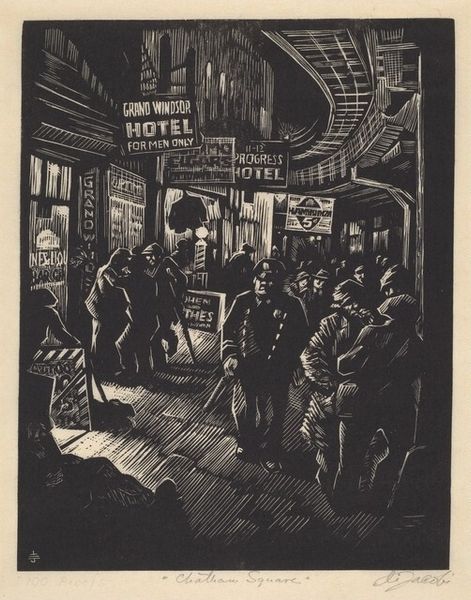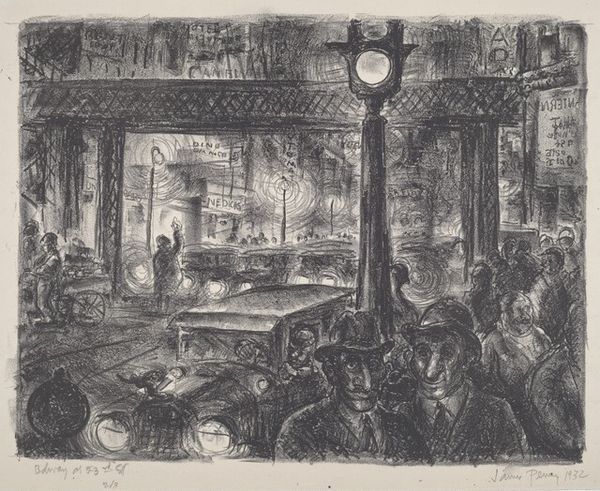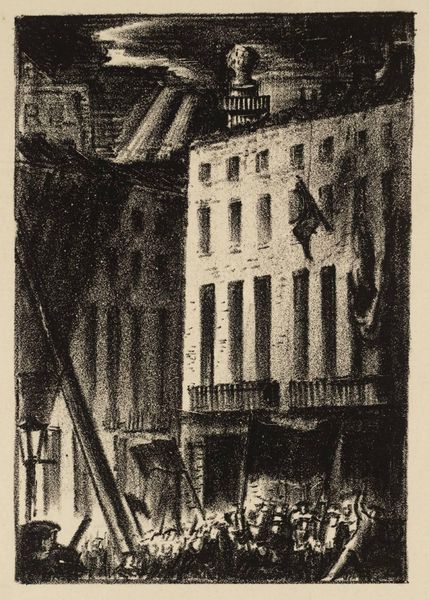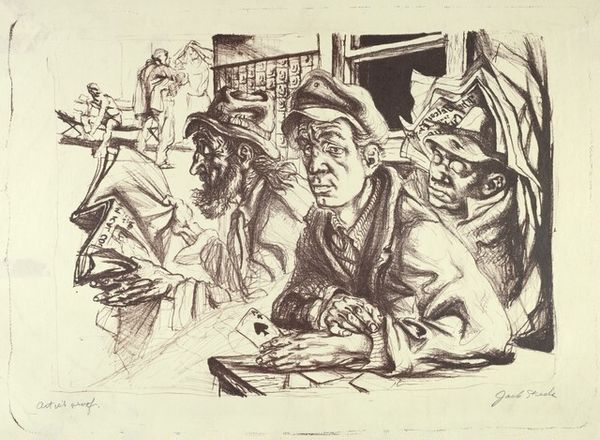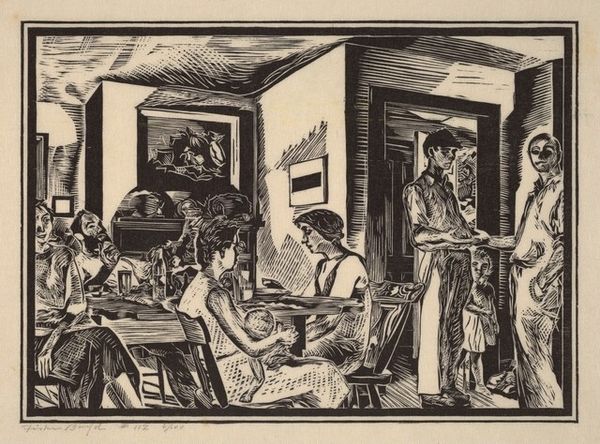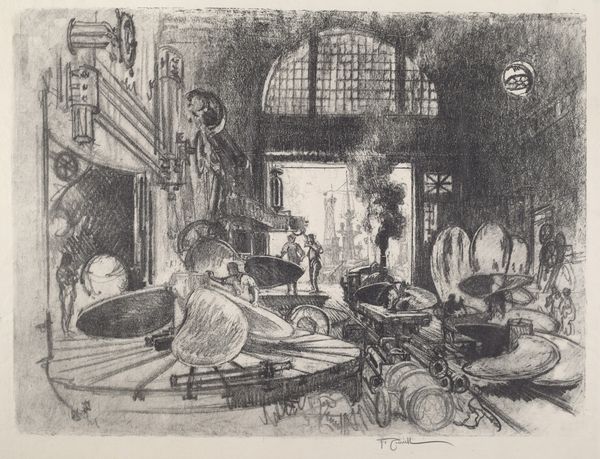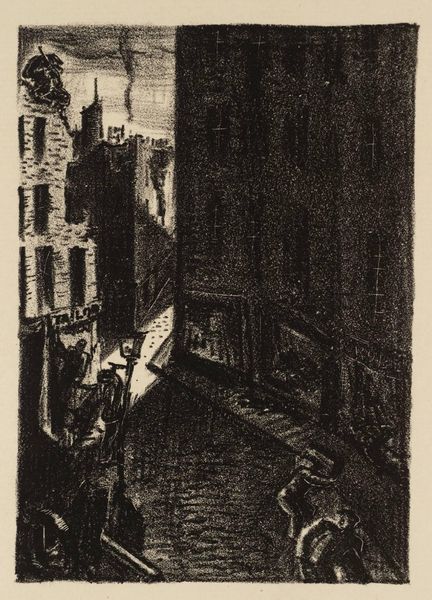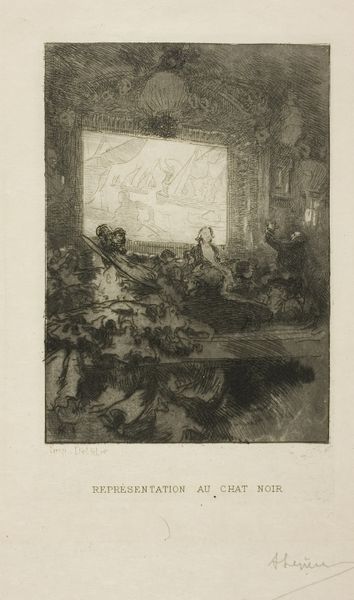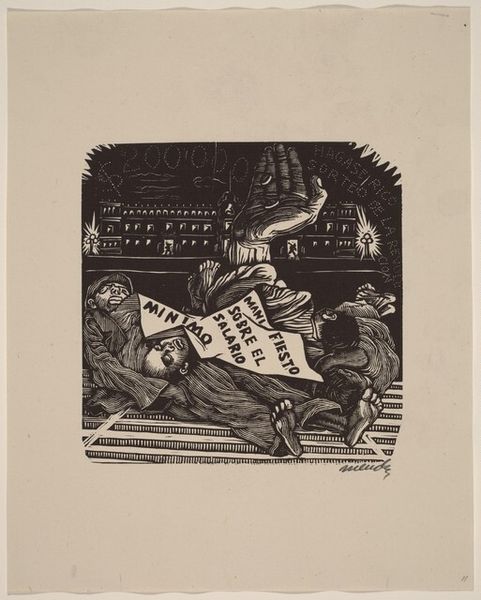
drawing, print, pencil, graphite
#
drawing
# print
#
pencil sketch
#
social-realism
#
pencil
#
graphite
#
cityscape
#
realism
Dimensions: image: 229 x 330 mm sheet: 305 x 400 mm
Copyright: National Gallery of Art: CC0 1.0
Curator: Fogel's "New York No. 1," created in 1936 with graphite and pencil, presents such a striking image. It has an almost dreamlike quality. What do you make of the materials and their use in portraying this urban scene? Editor: The starkness of the graphite, the almost newspaper-like quality… it does seem deliberate, given the subject matter. What kind of commentary do you think Fogel was making through his material choices, particularly during the Depression era? Curator: Precisely! Consider the social realism movement's focus. They were intentionally using accessible materials like graphite to depict the everyday lives and struggles of the working class. The medium itself becomes a vehicle for social commentary. What does the medium communicate here about labor, materiality, and social standing? Editor: It does seem like it is more about accessibility for the working class during the depression, rather than being high art. What do you see in terms of how the drawing tackles this contrast and reinforces it? Curator: Notice how Fogel uses the graphite to create strong contrasts, highlighting the harsh realities of urban life but is he celebrating that reality, criticizing it, or simply documenting? How does his technique reinforce the struggles faced by people during this time? Editor: He doesn't seem to romanticize the poverty; it looks bleak and, in many ways, hopeless, given the industrial subject matter. What is the effect on the meaning? Curator: Think about the role of mass production and consumption during that time. How did the ready availability of these drawing materials impact the artist's ability to comment on these issues directly? Editor: That's fascinating. By focusing on the materials themselves, it shows how artists can engage in social discourse. Curator: Exactly! And understanding the economic context surrounding the materials amplifies the artwork’s message and legacy.
Comments
No comments
Be the first to comment and join the conversation on the ultimate creative platform.

